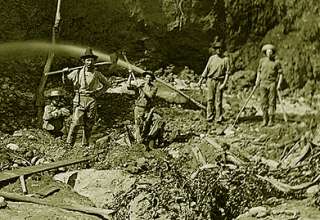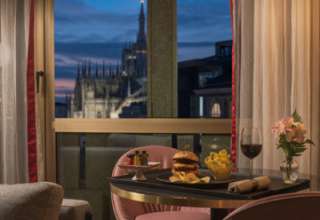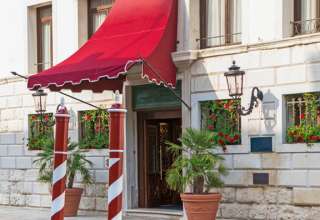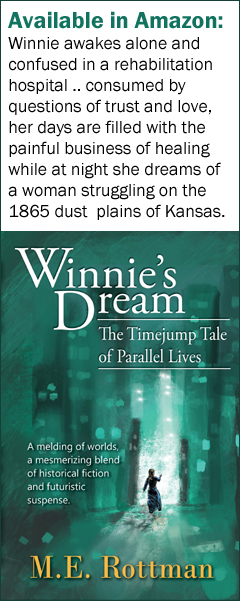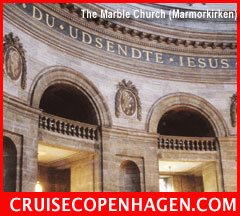Photos courtesy of Visit Wilmington, except where noted.
Might you need…
- A “traveling bag” that can convert to a stool, just in case you’re weary while you’re on a journey?
- A hotel/hospital bed that has a built-in ladder in the bed frame, that can be used for a quick get-away in case of a fire emergency?
- A musical keyboard instrument that converts to a bed, for when you are short of space for unexpected guests?
Such is the stuff, to paraphrase Shakespeare, that dreams are made of and these are the fascinating fruits of cornucopic minds that see things not as they are, but as they might be, each conjured up as machinery that can solve problems, improve existing solutions, or, at the very least, simplify life.

The visionaries who fantasized first and later fabricated these inventions into reality are, respectively, one Victor Percheron, who patented his inventive suitcase/stool in 1866; Frederick Swinden and Alfred Buxton, who intuited that hotel guests might need a ladder in case of fire, so they created just such a convertible bed and patented their brainchild in 1879; and John McDonald, who knew that because people’s homes are short on space, a two-fer fantasy piece of furniture could be an ideal solution, for which he received his patent in 1869.
Encouraging ingenuity and origination in a budding America was so important to the nation’s growth that in 1790 President George Washington actually signed the first patent legislation himself, and because the patent process was regarded as critical to economic growth and security, every patent issued was signed by the President until 1836. From 1790 until 1880, the U.S. Patent Office required applicants to submit scale models, detailed descriptions, and drawings for the Patent Office to scrutinize.
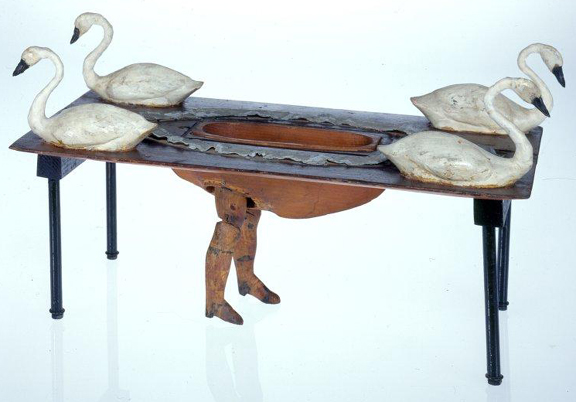
This trio of inventions, with their charming mini-models, are but three among some 5,000 models of machinery, gadgets, and gizmos, all in miniature, that are part of the American Patent Model Collection at the Hagley Museum and Library in Wilmington, Delaware. The museum is dedicated to inspiring people to be innovative in their own lives. Located on 235 acres along the banks of the Brandywine River, Hagley is the site of the original gunpowder works founded by French emigre Éleuthère Irénée du Pont de Nemours, who arrived on these shores with his father and brother in 1800. This site would ultimately become the bedrock of today’s DuPont Company. (Who has not heard the company’s original tagline: Better Things for Better Living…Through Chemistry?) And it is not surprising that the DuPont organization and family legacy punctuate many of the historic sites in Wilmington.
It is an interesting aside to note that du Pont tried his hand at a half dozen businesses that all failed before he returned to the science and business he knew best—gunpowder. Also, noteworthy, is that the fortunes of the company rose dramatically, as DuPont supplied well over 60 percent of the gunpowder used by the Union Army during the Civil War.
I could have spent all day at the Hagley, peering into inventors’ minds as I drank in their remarkable mechanical fantasies. As Christopher M. Cascio, the Alan W. Rothschild Assistant Curator, Patent Models, told me: “They simply see things that we don’t.”
There was, however, so much more to see and do in and around this area, that I had to hurry along to my next stop, the renowned Winterthur Museum, Gardens, and Library. The home to several generations of du Ponts, it is today considered one of the greatest repositories of American furniture and decorative arts, with a collection of 90,000 objets displayed in the manse’s vast 175 rooms. One butler’s pantry features candlesticks and candelabra only, on shelves floor to ceiling. Situated on close to 1,000 acres, comprising glorious meadowlands, woods, waterways, and woodlands, Winterthur offers a snapshot of a privileged life in early America. It is another place I could have stayed for a day. In addition, there is a modern annex that houses (on rotation) some of the remarkable Campbell Collection of Soup tureens, donated to Winterthur in 1997—charming, whimsical, sturdy, slick; a tureen for every taste. If you’re exhausted after your turn around the house (all 175 rooms are not open to the public), then take the tram around the grounds to experience the superb gardens.
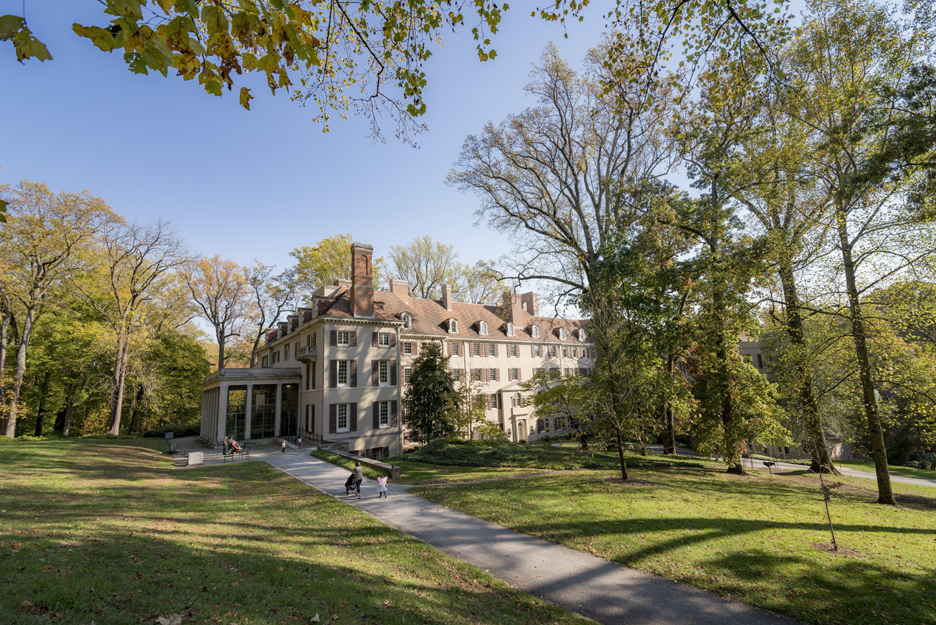
As magnificent as Winterthur is, I loved even more the Nemours Estate, home to Alfred I. du Pont, great-grandson of E. I. even more. It is a “modest” dwelling with a mere 102 rooms on a scant 100 acres, but with showy grounds modeled after the gardens of the Palace of Versailles, including fountains, mazes, towers, monuments, nature trails, and nooks for hiding. Dual bowling alleys, a billiards room, a room with floor-to-ceiling refrigeration units (Alfred had been a student at M.I.T. and embraced the cutting-edge technology of yesteryear), and a stately garage, which still houses beaucoup de cars. Among them is a 1960 Rolls Royce Phantom V Town Car, one of just ten that was manufactured in a single year.
The region is overflowing with the riches of diverse museums, galleries, historic homes, and seven parks, so you’ll not want for interesting sites and sights to fill your day. I thoroughly enjoyed the Brandywine Museum of Art, which houses a distinguished collection of nineteenth- and twentieth-century American art, housed in a renovated nineteenth-century mill with a dramatic steel and glass addition that overlooks the bucolic Brandywine River. The extraordinary site—the intersection of art and nature—emphasizes the Brandywine Conservancy’s commitment to the preservation of the natural, cultural, and scenic resources of the region. Just as an aside, I happened to be there in mid-autumn, and stumbled upon a massive table laden with boxes, each containing a single, charming “little critter,” just inches high, made from the fallen seeds, pinecones, berries, pods, grasses, and other natural botanicals, all scavenged “stuff” that museum volunteers turned into small, imaginative animals—fanciful creatures, gremlins, elves, ready to come home to your house to anoint a table or nestle in the branches of your Christmas tree.
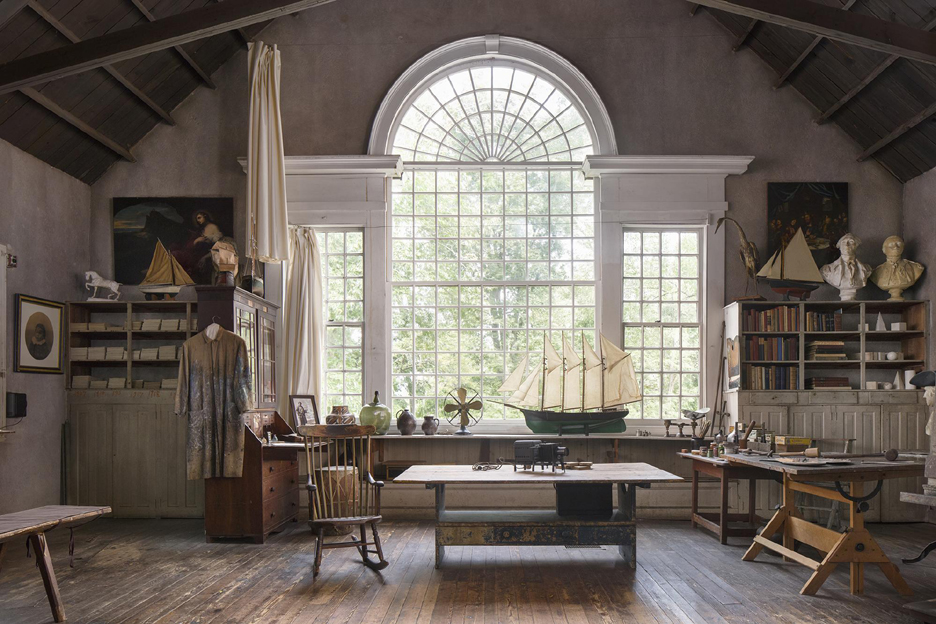
The crowning jewel: On the grounds of the museum’s campus is the house and studio of N. C. Wyeth, that appears to be exactly as the artist might have left it when he nipped out to grab a bite of lunch. It presents a moment frozen in time in a great artist’s life, and you’ll be captivated by all the trappings of such an artistic personage. Wyeth even has a chockablock prop room. Naturally, the museum holds many works by N.C., Andrew, and Jamie.


If time permits, head to the Delaware Art Museum, which has 12,000 works, including historical and contemporary American art, British Pre-Raphaelite art, and American illustrations, the centerpiece of which are the works of Howard Pyle. I would run out of room before I ran out of museums and historic homes to share here, for you to visit—but a few are Rockwood Park and Museum, the Sanderson Museum, and the Delaware Children’s Museum, among the many.
A scant forty minutes’ drive away, in Kennett Square, Pennsylvania, but still in the Brandywine Creek Valley—and as much a de rigueur visit as Winterthur is—is the legendary Longwood Gardens. Originally a Quaker farmstead and arboretum, Longwood was transformed by the future-focused Pierre S. du Pont, who purchased the land in 1906, undertaking the stewardship of the gardens, with the intention of saving it from the proverbial wrecking ball—that is to say, saws, used to cut down the trees. He did not intend to create Longwood Gardens, as we know it today, but by 1921, when he opened the Historic Main Conservatory, visitors were flocking to Longwood, and continue to do so today; a staggering 1.6 million guests arrive yearly and reservations are strongly encouraged for the most popular times, including Longwood Christmas, Spring Blooms, and Festival of Fountains.
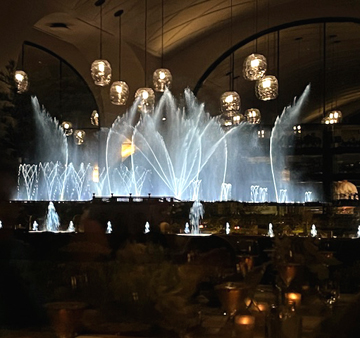
Longwood today comprises 1,100 acres of dazzling gardens, woodlands, meadows, fountains, a 10,010-pipe Aeolian organ, and a grand conservatory. In a word, it is majestic, showcasing the efforts of inventive and dedicated renowned landscape designers, horticulturists, and architects. In recent years, Longwood undertook a major revision, called Longwood Reimagined, focused on 17 acres of the property, reconfigured to include another grand conservatory (32,000 square feet), new offices, a revitalized potting shed, and a stunning restaurant, 1906, which, before it even opened in the fall, had registered nearly 10,000 reservations, going forward for months. With its floor-to-ceiling, arched windows overlooking the imperial Main Fountain Garden, and its soaring ceilings and elegant furnishings (crafted from reclaimed wood from Longwood trees), every detail of this remarkable space is designed to delight and inspire—including the menu of delectable, tempting dishes: You are not likely to find a menu elsewhere that boasts categories headlined as Flora, Funga, Fauna/Ocean, and Fauna/Pasture. Under the whisk of executive chef George Murkowicz, the restaurant is managed by the acclaimed Restaurant Associates.
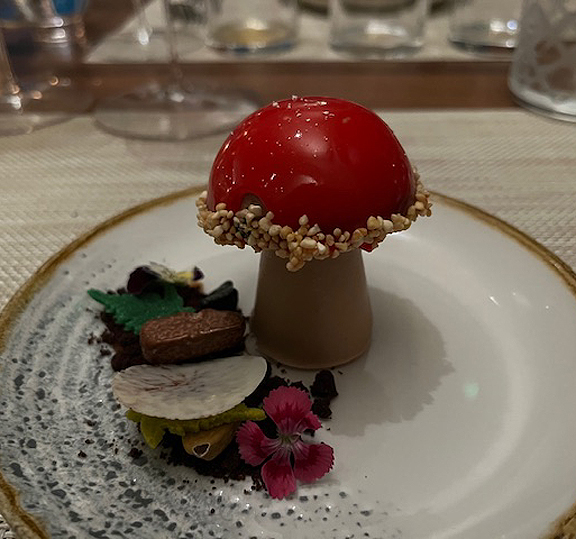
That, logically, brings us to the fine cuisine elsewhere in the region, that you’ll want to sample on your trip. I had such toothsome meals in the area it’s hard to pick out just a few to mention, but you’ll assuredly want to visit a local legend, Buckley’s Tavern, originally a historic home and blacksmith shop, dating back to 1817. It was converted to a taproom and ice cream shop in the 1930s, and then transformed again when it was purchased by Dennis Buckley some 75 years ago. The menu comprises hardy comfort food, and the atmosphere is always buzzing.
With an entirely different and enticing menu, the imaginative and flavorful cuisine at the downtown fave Bardea (an Italian term for the goddess of food and drink) will assuredly tickle your palate. Partners Scott Stein and Antimo DiMeo, who opened the eatery in 2018, quickly gained renown, when Bardea was named a James Beard New Restaurant semifinalist in 2019; in that same year, DiMeo garnered the Restaurant Industry Rising Star appellation from the Delaware Restaurant Association.
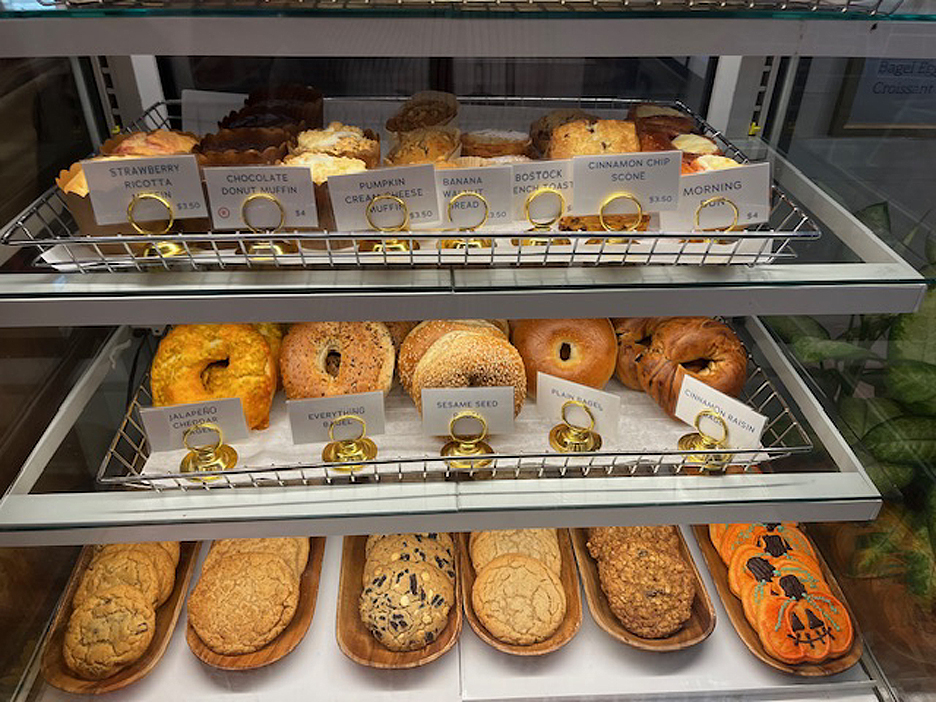
For breakfast, I settled into one of the mix-and-match chairs at Centreville Place: Café + Market, a cozy spot serving breakfast comfort food (good size portions) with a French flair. Wife and husband team, Elizabeth and Vince Moro, set up shop here a few years ago, in the Dalton-Lynch historic home, and were an instant success with their combination of wholesome and inspired cuisine.
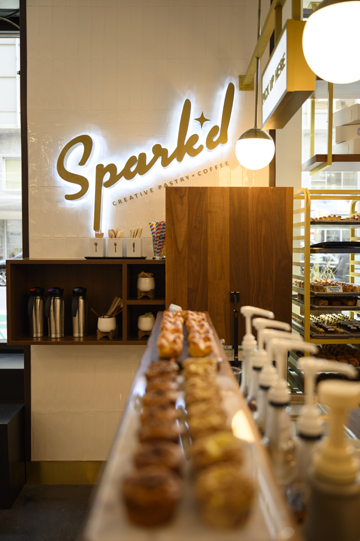
If breakfast for you is a grab ‘n go affair, then head to De.CO, a pioneering food hall, under the management of the Bardea team, featuring contemporary offerings in the historic DuPont Building. Seven different restaurant stalls (and one full-service restaurant) are located under one roof. The DuPont Building is also home to the celebrated Hotel du Pont, a member of the Historic Hotels of America, and a grand dame in the city, and frankly, a grand dame in the country. Formerly, the building was home to the corporate offices for the DuPont Company, constructed at the behest of Pierre S. du Pont. In 1913, this dowager featured 150 stately guestrooms, as well as several impressive meeting rooms, a rathskeller, a ballroom (called the Gold Ballroom), and a club room. There was even a separate café for men and a reading room for women. Polished brass beds, imported linens, and extravagant dressing tables were furnished in the guest rooms. Inside the main dining room, handsome oak paneling provided an elegant contrast to the mosaic and terrazzo floor tiles. Six imposing chandeliers hung above the venue, illuminating the burnished-gold embellishments below. It featured rich hues of jade and ivory, as well, and they gave rise to the nickname, the Green Room.
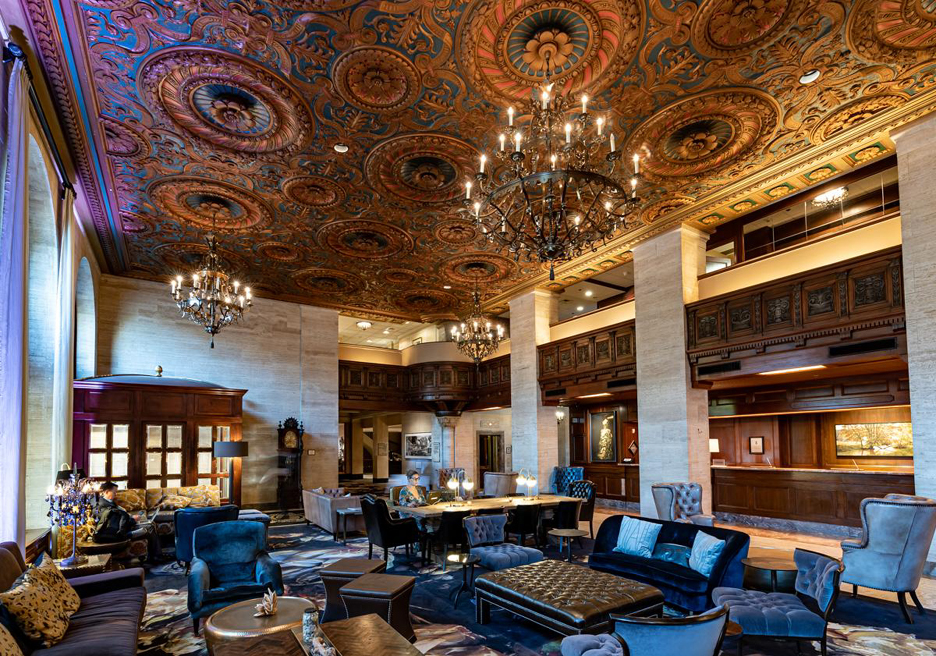
The hotel became an overnight sensation, hosting close to 25,000 people in just the first week. Word traveled fast of du Pont’s spectacular new hotel, attracting scores of people from across the nation. By the late 1920s, some of the most illustrious figures in America were reserving guestrooms at the du Pont, including aviators Amelia Earhart and Charles Lindbergh. A look-back at the guest book illustrates just who came here—from all walks of life: bold-face names including Ingrid Bergman, Elizabeth Taylor, Henry Kissinger, Lucille Ball, Reese Witherspoon, Colin Powell, Jon Bon Jovi, Diane Keaton, Meryl Streep, and on and on.
Today, after renovation and refurbishment, it remains a truly majestic building, with a lobby and restaurant, Le Cavalier, sporting old-world sophistication and class. Do not pass up an opportunity to dine in the restaurant, which features a modern French approach, influenced by the flavors of North Africa and Provence, with inventive riffs on French staples.
As a final caveat, don’t book your trip for a mere long weekend. There is so much more here in and around Wilmington, that I barely had time to scratch the surface and I am itching to return to see much more of the town’s history, old town, museums, historic homes, shops, and galleries. It is a tribute to the du Pont family that they poured a big chunk of their hearts, souls, and capital into the area, so that we might savor all the bounty the Brandywine Valley has to offer.
For more information: visitwilmingtonde.com
© Ruth J. Katz 2025 All Rights Reserved


